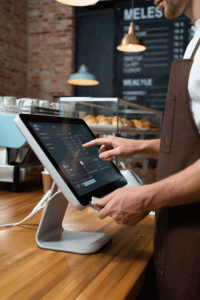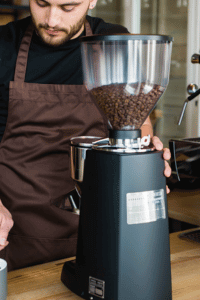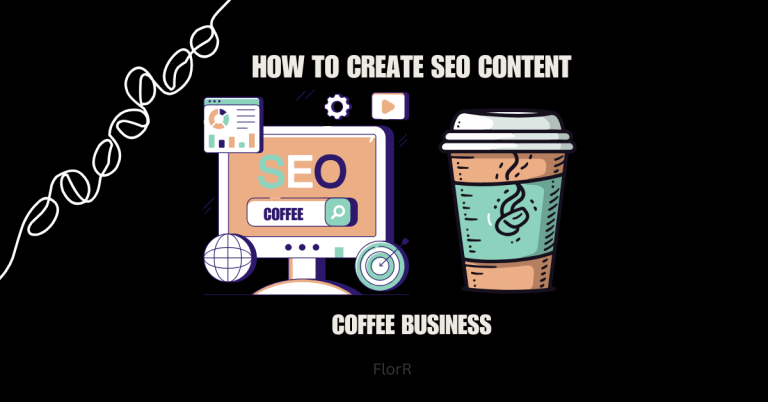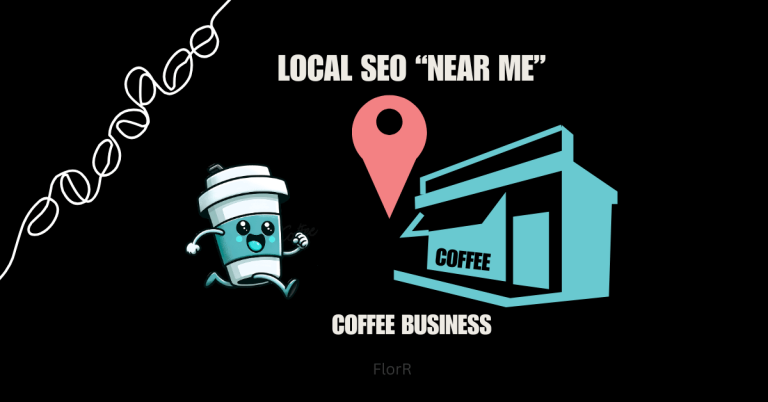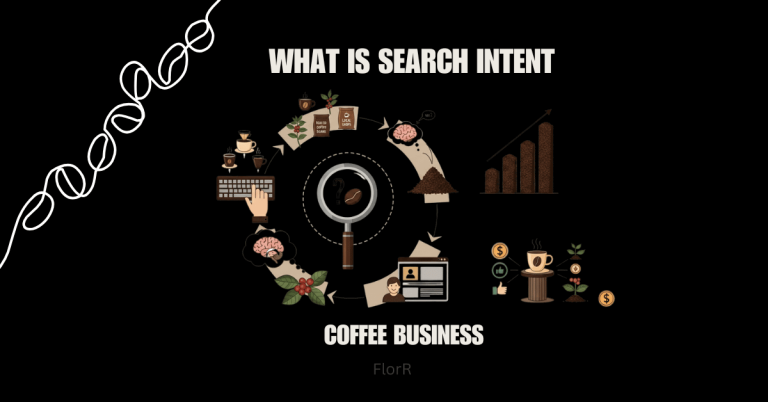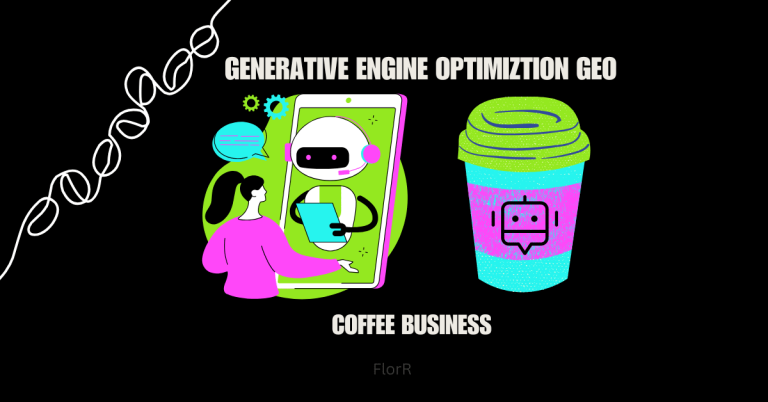
This site contains affiliate links. I may earn a commission if you purchase through these links. Thank you for being so supportive!
Ever notice how some coffee shops appear first in search results while yours remains buried? The difference isn’t their beans, it’s their mastery of SEO copywriting.
While you’re perfecting your espresso, successful coffee businesses are creating content that ranks well by strategically balancing search optimization with engaging storytelling.
This isn’t just about stuffing keywords, it’s about crafting messages that resonate with both algorithms and humans.
Here’s what thriving coffee shops understand: On-page SEO starts with identifying search terms people use, then weaving them naturally into content that helps search engines understand your coffee expertise.
The cafés dominating search results aren’t necessarily better; they’re just more strategic with their words.
Ready to stop being your city’s best-kept secret?
Learn practical SEO copywriting techniques specifically for coffee businesses that will improve your visibility in search results, connecting you with customers actively looking for what you offer.
What is SEO Copywriting and Why is it Important for Coffee Businesses?

SEO copywriting strategically combines engaging content with targeted search terms to help coffee businesses rank higher in search results. It’s the art of writing for both humans and search engines simultaneously.
Content marketing costs 62% less than traditional marketing while generating 3x as many leads. For coffee businesses, well-optimized content connects you with local customers actively searching for coffee experiences in your area.
As someone who writes about coffee business marketing and SEO, I’ve seen cafés double their foot traffic through strategic content that ranks for neighborhood-specific terms.
Think of SEO copywriting like perfecting your espresso recipe, it needs to satisfy both the sophisticated palate (readers) and meet technical standards (search engines) to create the perfect blend of engagement and visibility.
Why is SEO Copywriting Important for Coffee Shop Rankings?
Quality content directly impacts your coffee shop’s search visibility. Content remains among Google’s top three ranking factors, making your SEO content strategy essential for standing out in crowded markets.
When you make your content both valuable to readers and optimized for search engines, you create multiple pathways for customers to discover you.
Through my experience optimizing coffee business websites:
I’ve seen cases where cafés implementing SEO best practices for just their core service pages saw 40 %+ increases in both online visibility and physical store visits within 3-4 months, particularly for valuable search terms like “specialty coffee shop near me.”
How Do Keywords Impact Your SEO Copywriting Strategy?

Keywords form the foundation of effective SEO copywriting for coffee businesses. They bridge the gap between what people search for and the content you create to meet their needs.
Let’s break down how to use keywords effectively in your coffee business content: Unlike traditional copywriting that focuses purely on persuasion, SEO content writing requires strategic integration of terms your potential customers use when searching.
Having helped numerous coffee shops develop content that ranks, I’ve found that understanding semantic search writing principles helps create comprehensive content that addresses related questions and needs, not just exact keyword matches.
How Do You Find the Right Keywords for Coffee Business Content?
Finding the right keywords starts with understanding what your potential customers are typing into search engines when looking for coffee businesses like yours.
Use tools to help identify local coffee terms with decent search volume but manageable competition.
For example, “specialty coffee shop downtown” often converts better than just “coffee shop.”
Your SEO strategy should map keywords to customer journey stages, awareness terms like “what is single-origin coffee” require different content than decision terms like “best espresso in [your city].”
From my experience running coffee marketing campaigns, I recommend focusing on terms where you want to rank for business goals, not just traffic.
Where Should You Place Target Keywords in Your Coffee Content?
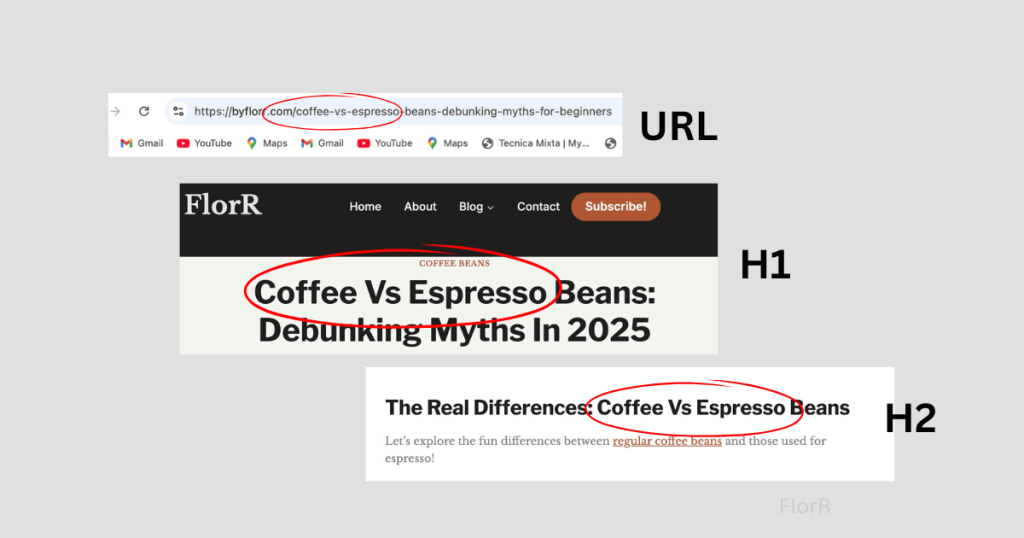
Strategic keyword placement dramatically improves how search engines understand your coffee content. Knowing where to include keywords makes your content optimization techniques more effective.
Include your target keyword in your title, first paragraph, at least one H2 heading, image alt text, and naturally throughout your content.
Most importantly, use variations based on how people search, if targeting “coffee subscription,” also include “coffee subscription box” and “monthly coffee delivery.”
Having optimized hundreds of coffee business pages, I’ve seen that natural keyword integration that prioritizes readability over density consistently performs better in today’s sophisticated search landscape.
What SEO Copywriting Best Practices Drive Coffee Business Success?

Effective SEO copywriting for coffee businesses combines strategic keyword usage with engaging, scannable content that keeps readers interested. Structure matters as much as the words themselves.
Use SEO fundamentals like clear H2/H3 headings, short paragraphs, and bulleted lists that make content easy to scan.
Top-performing coffee businesses use SEO to balance information density with readability, keeping bounce rates low.
Having developed content strategies for numerous cafés, I’ve found that top-of-the-page content should immediately address search intent, while lower sections can explore related topics that enhance depth and authority.
☕️ How Do You Write Title Tags That Rank Higher and Drive Clicks?
Title tags are your coffee content’s first impression in search results. Crafting compelling titles that include your target search term dramatically improves click-through rates.
Use this formula: [Primary Keyword] + [Benefit/Intrigue] + [Brand or Location Modifier] in under 60 characters.
For example, transform “Coffee Brewing Guide” into “Pour-Over Coffee Brewing: 5 Barista Secrets | Bean Culture Café.”
Through my experience optimizing coffee business content, I’ve seen properly structured titles increase click rates by 25-40% while maintaining or improving rankings for the target query.
☕️ Why Are Meta Descriptions Important in SEO Copywriting?
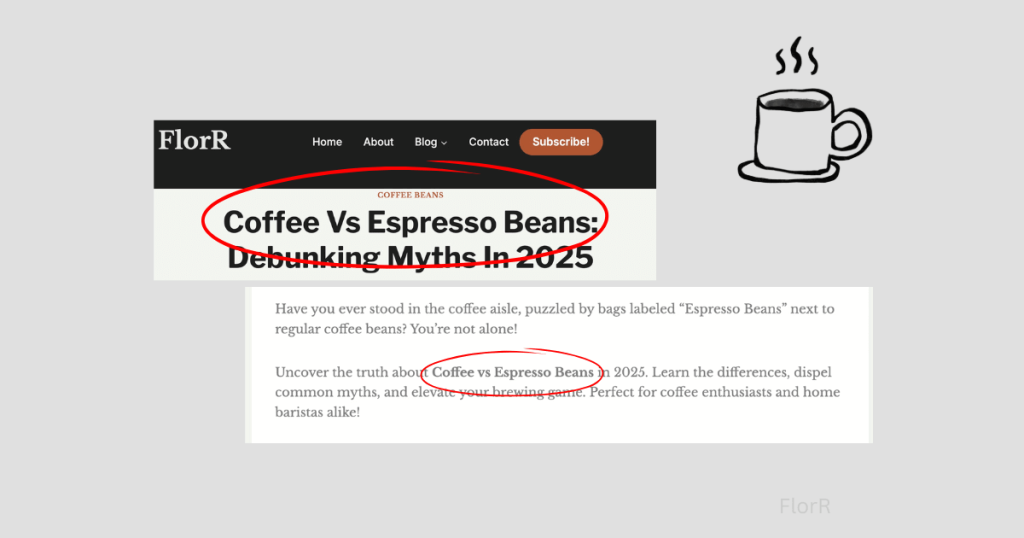
Meta descriptions serve as your website’s elevator pitch in search results. While not direct ranking factors, compelling descriptions significantly improve click-through rates, which do affect rankings.
Craft 150-character descriptions that include your main keyword and a clear call-to-action.
For example: “Discover our small-batch roasted Ethiopian beans with notes of blueberry and chocolate. Visit our downtown café or order online with free local delivery.“
SEO copywriting can help attract clicks through meta descriptions that highlight unique selling points and create urgency, skills I’ve helped numerous coffee businesses master.
☕️ How Can You Optimize for Featured Snippets in the Coffee Industry?
Featured snippets position your coffee content at position zero, above traditional search results. Winning these prime placements requires strategic content structuring with clear answers to common questions.
Create long-form SEO articles with dedicated Q&A sections that directly answer coffee-related questions like “How to store coffee beans” or “What’s the difference between light and dark roast?”
Following SEO copy best practices, use tables for comparisons, numbered lists for processes, and targeted paragraphs for definitions.
Having helped coffee businesses capture dozens of featured snippets, I recommend researching top questions in your niche before creating content specifically formatted to win these valuable placements.
How Can AI Tools Help With SEO Copywriting for Coffee Businesses?

AI tools streamline SEO copywriting for coffee businesses, helping you create effective content faster while maintaining quality. These tools complement human creativity rather than replacing it.
A tool like ChatGPT or Claude can generate first drafts based on keyword research, but humans should refine the content to match your brand’s unique perspective.
Having integrated AI into content workflows for numerous coffee businesses, I’ve found the best approach uses AI for research and structure while saving your human touch for storytelling and emotional connection with your target audience.
This hybrid workflow helps coffee shops write content that ranks while maintaining an authentic voice.
What Are the Benefits of Using AI SEO Tools for Content Creation?
AI tools save busy coffee shop owners valuable time while improving content quality through data-driven insights. These tools excel at specific aspects of SEO content creation.
AI excels at keyword research, generating topic ideas, creating content outlines, and title tag optimization, tasks that would take humans hours.
For example, an AI can analyze top-ranking coffee articles to identify common subtopics you should include.
From my experience implementing AI workflows for coffee brands, I’ve found these tools most valuable for scaling content production while maintaining consistent optimization, allowing you to focus your limited time on brand storytelling.
How Do You Maintain Your Brand Voice When Using AI Writing Tools?
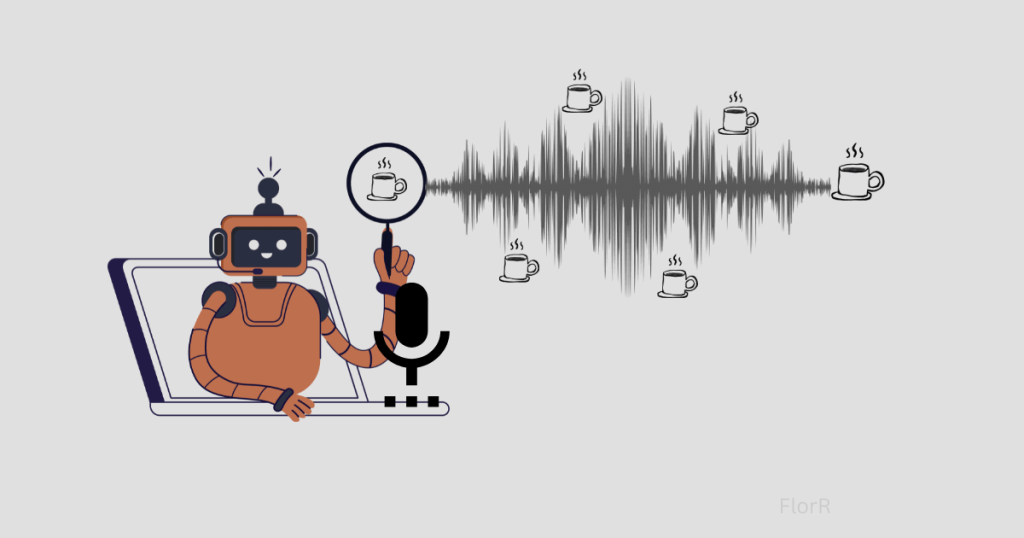
Maintaining your coffee shop’s unique brand voice when using AI requires deliberate training and consistent editing to ensure authenticity. Your voice is your competitive advantage.
Create a clear brand voice guide with examples of your preferred tone, vocabulary, and phrasing before using AI tools.
When receiving AI-generated content, apply content optimization techniques like adding your signature phrases, personal anecdotes, and location-specific details that AI can’t know.
Through my coffee marketing experience, I’ve helped businesses develop efficient editing checklists that transform generic AI text into on-brand content that still maintains the SEO benefits.
What Makes SEO Copywriting for Local Coffee Businesses Different?

Local SEO copywriting connects coffee businesses with nearby customers through strategic content that emphasizes location relevance. It’s about being visible when potential customers search in your area.
Unlike general SEO content, local SEO copywriting naturally incorporates neighborhood names, landmarks, and community references to signal relevance to Google and other search engines.
Having helped numerous coffee shops improve their local visibility, I’ve seen content that people connect with emotionally (like “best study spots in downtown”) drive more foot traffic than generic coffee articles.
The perfect blend combines search intent alignment with authentic community connections.
How Do You Optimize Content for “Near Me” Coffee Searches?
“Near me” searches have explosive growth potential for coffee businesses, with 76% of people who search locally visiting a business within 24 hours. Optimizing for these searches drives immediate foot traffic.
Create dedicated neighborhood landing pages highlighting local connections and amenities near your café.
Include location-specific keywords naturally throughout content, meta descriptions, and image alt text.
Through my experience implementing local SEO copywriting strategies:
I’ve found that adding structured data markup for your address, hours, and menu dramatically improves visibility for proximity-based searches, helping your content earn more organic traffic from valuable nearby customers.
How Do You Create SEO Content That Converts Coffee Lovers?

Creating SEO content that converts requires balancing search visibility with persuasive copywriting that drives coffee lovers to take action. Effective SEO and content strategy move readers through the customer journey.
Apply the AIDA model (Attention, Interest, Desire, Action) within your SEO-optimized content.
For example, grab attention with a search-friendly headline about “small-batch roasting,” build interest with unique process details, create desire by describing flavor profiles, and drive action with a compelling offer.
Having developed conversion-focused content for numerous coffee brands, I’ve found that every piece of content should have a clear purpose beyond SEO, whether that’s newsletter signups, store visits, or online orders.
What Type of Content Works Best for Coffee Shop SEO?
Certain content types consistently outperform others for coffee businesses in both engagement and conversion metrics. Investing in the right formats maximizes your SEO return.
Create a mix of evergreen SEO content (brewing guides, bean origin stories) and timely content (seasonal offerings, coffee trends).
The highest-performing formats include how-to guides, local coffee scene roundups, bean comparison guides, and barista profile features.
Through my experience optimizing coffee business websites, I’ve found that technical SEO content like brewing tutorials works exceptionally well.
For both search visibility and customer education, especially when repurposed across your website, social channels, and email marketing.
What Advanced SEO Copywriting Techniques Can Help Coffee Businesses Rank Higher?

Advanced SEO and copywriting techniques can elevate your coffee business content from basic to exceptional, helping you outrank competitors through strategic content organization.
Implement topic clustering by creating a comprehensive “pillar page” about a broad topic like “coffee brewing methods,” then linking to detailed “cluster content” about specific methods like pour-over or French press.
Having helped coffee businesses restructure their content, I’ve seen that this approach signals topical authority to search engines while providing a great user experience.
Additionally, incorporate UX elements that boost engagement metrics, like clean formatting, multimedia elements, and intuitive navigation, as these factors directly impact both readers and rankings.
How Does Content Length Affect SEO Rankings for Coffee Websites?
Content length significantly impacts your coffee website’s ranking potential, but quality always trumps quantity. High-quality content that thoroughly answers searchers’ questions performs best regardless of word count.
Research shows top-ranking coffee content averages 1,200-1,800 words for comprehensive guides but only 600-800 words for local landing pages.
Great SEO copywriting focuses on comprehensiveness rather than arbitrary length targets. From my experience optimizing coffee business websites, I recommend looking at what already ranks for your target terms.
Then, creating content that addresses the same topics more thoroughly, adding unique insights rather than fluff for SEO purposes.
How Can You Use Schema Markup to Enhance Your SEO Copywriting?
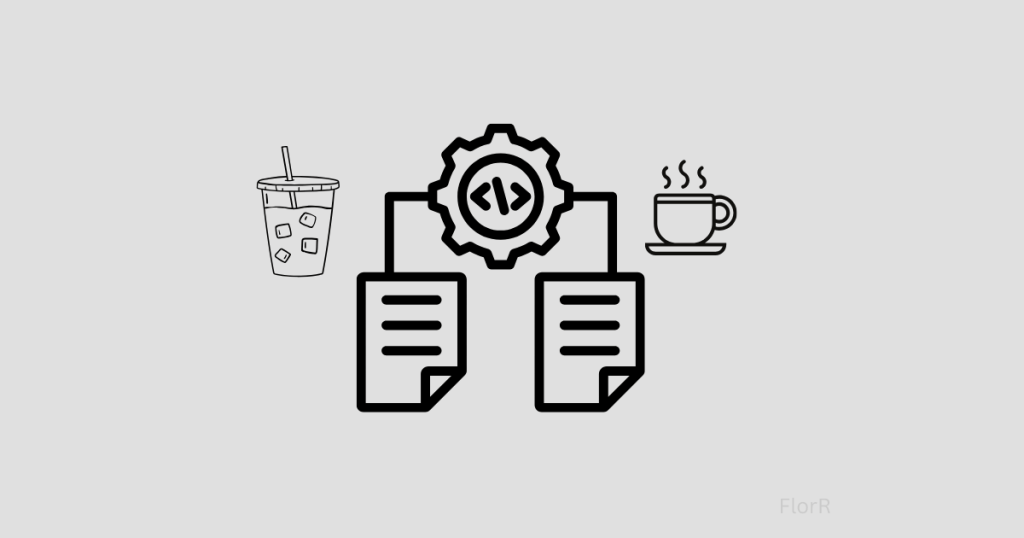
Schema markup provides search engines with structured data about your coffee business content, potentially earning enhanced visibility through rich results and featured snippets. This technical SEO implementation complements your copywriting efforts.
Implement Local Business, Product, and Recipe schema types to enhance your coffee shop content.
For example, a Recipe schema for your brewing guides can display star ratings and prep time directly in search results.
Having implemented schemas for numerous coffee businesses, I’ve found that properly marked-up menus, events, and FAQs significantly improve click-through rates.
A strategic advantage that many coffee shops overlook while focusing exclusively on SEO writing tips without considering technical enhancements.
How Does an SEO Copywriter Approach Content Differently?
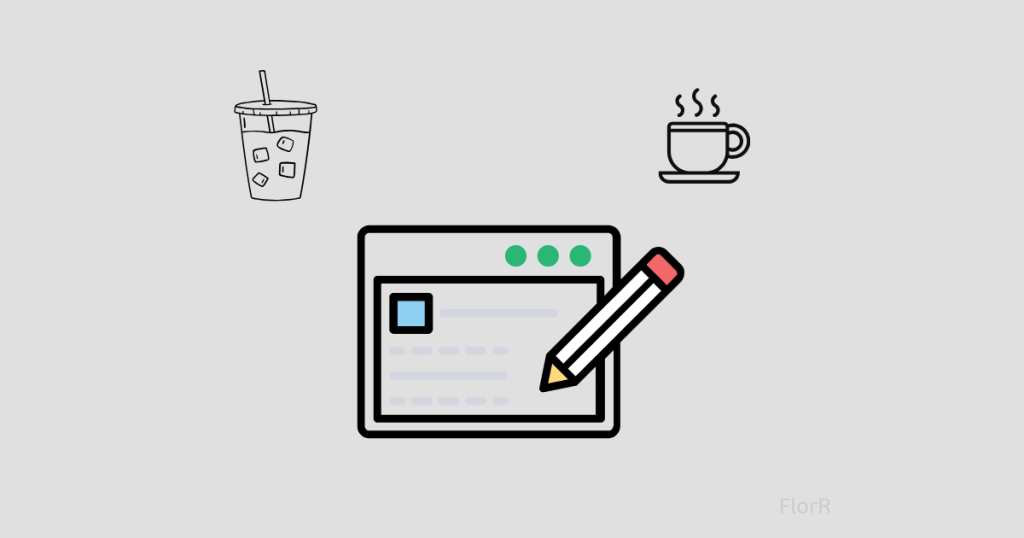
SEO copywriters approach content strategically, balancing creative writing with technical optimization requirements. This dual focus mindset sets them apart from traditional writers.
While conventional copywriters focus mainly on persuasion, SEO copywriters start by analyzing search intent and keyword opportunities before crafting messages.
Having trained numerous coffee business owners in content marketing.
I’ve found the most successful ones develop a systematic approach, researching keywords first, outlining content based on top-ranking competitors, then writing engaging copy with strategic SEO keyword placement.
This methodology ensures you’re optimizing your content for both humans and search engines.
What SEO Copywriting Training Would Benefit Coffee Shop Owners?
Coffee shop owners can develop essential copywriting skills through focused training resources designed for small business content creation. Learning SEO fundamentals transforms your marketing effectiveness.
Start with SEO basics through free courses from Moz or HubSpot, then develop specialized copywriting skills through resources like “Restaurant SEO” by BrightLocal or “Food Writing That Sells” by Mediavine.
As a content marketer who’s guided coffee businesses through this learning curve, I recommend practicing by rewriting your bestseller descriptions or creating SEO-friendly blog posts about your brewing methods.
The most effective exercise is analyzing a competitor’s high-ranking content, then creating something more valuable using what you know about SEO copywriting.
How Do You Measure if Your SEO Copywriting Works?

Measuring SEO copywriting effectiveness requires tracking specific metrics that show both visibility improvements and business impact. Effective measurement reveals whether your content investment is paying off.
Track organic traffic, page position for target keywords, time on page, and conversion actions like “get directions” clicks or online orders.
Google Search Console shows when your content starts to rank in search engine results and for which terms.
Having implemented analytics for numerous coffee businesses, I recommend creating a simple monthly dashboard focused on the 3-5 metrics most relevant to your specific business goals, typically starting with visibility metrics before tracking revenue impact.
How Long Does SEO Copywriting Take to Impact Rankings?
SEO copywriting typically takes 3-6 months to significantly impact your coffee business’s Google ranking, though this varies based on site authority and competition. Patience and persistence are essential.
Informational content often ranks faster (2-3 months) than commercial pages targeting competitive terms like “best coffee shop.”
Content optimization techniques can help it rank faster, proper internal linking and promotion across social channels signal relevance.
Through my experience with the coffee business SEO: I’ve identified early success indicators, including increased impressions in Search Console,
Improved positioning for related long-tail keywords and growing engagement metrics are all signs that your search intent alignment is working before reaching top-of-the-page placement.
What SEO Copywriting Tips and Best Practices Are Working Today?

SEO copywriting continues to evolve with search algorithms, but certain approaches consistently drive better results for coffee businesses. The most effective strategies blend technical optimization with genuine value creation.
Current best SEO copywriting practices include comprehensive topic coverage, conversational writing that aligns with voice search optimization, and content designed to rank for relevant search terms beyond just primary keywords.
Having tested various approaches across coffee business websites, I’ve found that detailed, well-structured content addressing searchers’ questions continues to outperform shallow content regardless of algorithm changes.
Showing why SEO copywriting is important for sustained visibility.
How Has AI Changed SEO Copywriting Today?
AI tools have transformed SEO copywriting by making content creation more efficient while raising quality standards across all industries, including coffee businesses. Search engines now expect exceptional content depth and relevance.
Google increasingly rewards content showing clear expertise, authenticity, and trustworthiness, qualities that distinguish human-enhanced content from pure AI generation.
For coffee businesses, this means using AI to streamline research and drafting while ensuring human expertise and local experiences shape the final result.
From my experience helping coffee shops adapt their content strategies, I recommend focusing on unique local stories and proprietary insights that AI alone can’t provide when creating everything from location pages to long-form SEO articles.
Key Takeaways
- Effective SEO copywriting starts with strategic keyword research focused on what coffee customers search for.
- Create location-specific content with community references to capture valuable “near me” searches.
- Structure content for both readability and SEO with proper headings, short paragraphs, and featured snippet optimization.
- Balance web copy optimization with compelling storytelling that keeps readers engaged and signals quality to search engines.
- Implement schema markup (LocalBusiness, Recipe) while measuring success through traffic growth and conversion actions.
Final Thoughts
SEO copywriting is one of the most powerful tools for connecting coffee lovers with your business online.
By strategically combining search optimization with compelling storytelling, you create content that both helps you rank and converts visitors into customers.
Start writing content that answers specific customer questions, incorporates location signals, and follows SEO copy best practices like proper formatting and keyword placement.
Time to brew up content that connects your amazing coffee with the people already searching for it. Begin with one high-value page, optimize it thoroughly, and build from there.
FAQs
How is SEO copywriting different from regular copywriting for coffee shops?
SEO copywriting strategically incorporates search queries and follows a guide to SEO structure, while regular copywriting focuses purely on persuasion without considering search engines.
What’s the ideal word count for a coffee shop blog post?
The ideal coffee blog length is 800-1,200 words for most topics, with local pages at 500-700 words and comprehensive guides at 1,500-2,000 words, based on what ranks well.
Can AI tools write good SEO copy for coffee businesses?
AI tools like ChatGPT help with research and first drafts, but need human editing to add local expertise, brand voice, and authentic storytelling that free AI alone can’t provide.
How often should coffee shops publish new content for SEO benefits?
Small coffee shops should publish 1-2 quality pieces monthly, while larger businesses with more resources can aim for weekly content, prioritizing quality over frequency.
What’s the ROI of investing in SEO copywriting for coffee businesses?
Coffee shops using proven SEO techniques typically see 30-50% organic traffic growth within 6 months, with successful cases showing a $3-5 return for every $1 invested.

